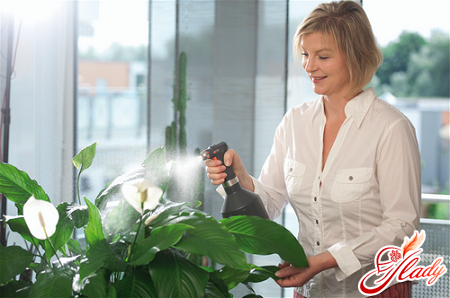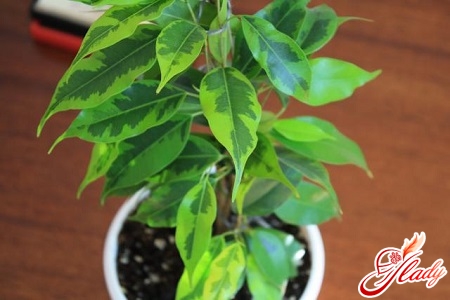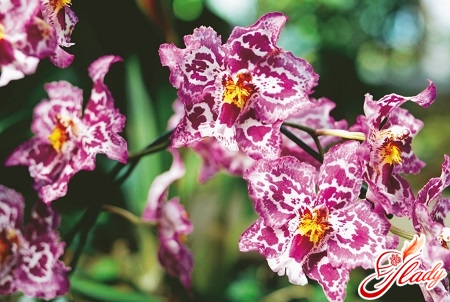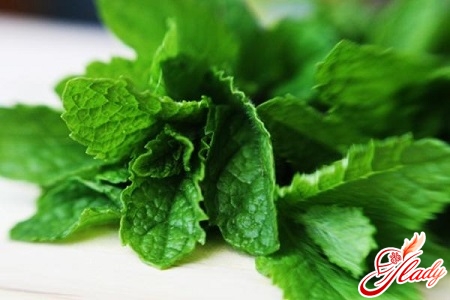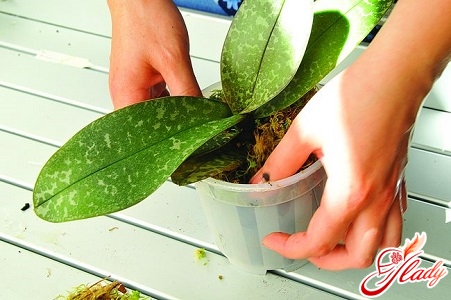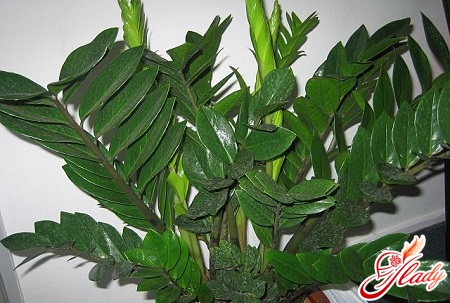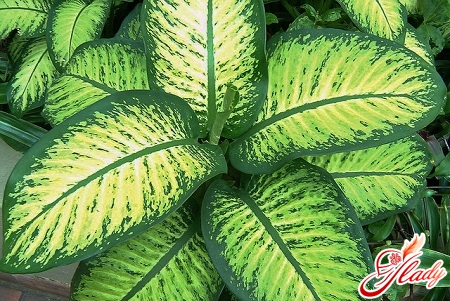 It has already happened that lovers of indoorFloriculture has chosen many varieties of plants for its flowerpots, the homeland of which is the subtropical forests of South America. However, this fact is of little concern to anyone, since pets have taken their place of honor in our homes and have become familiar and "native" to most flower growers. However, the correct care of indoor plants directly depends on the origin of the flower, on the characteristics of its growth in natural conditions. Dieffenbachia is no exception - home care for this plant has its own specific cultivation.
It has already happened that lovers of indoorFloriculture has chosen many varieties of plants for its flowerpots, the homeland of which is the subtropical forests of South America. However, this fact is of little concern to anyone, since pets have taken their place of honor in our homes and have become familiar and "native" to most flower growers. However, the correct care of indoor plants directly depends on the origin of the flower, on the characteristics of its growth in natural conditions. Dieffenbachia is no exception - home care for this plant has its own specific cultivation.
reference Information
The indoor plant dieffenbachia belongs tofamily of araceae and is essentially a semi-shrub with a recumbent stem. The plant received its official name in honor of the gardener Dieffenbach, who worked as a caretaker in the Vienna Botanical Garden in the nineteenth century and during his service made a huge contribution to the cultivation of the tropical flower. He also described in all the nuances the essential moments in the life of dieffenbachia - caring for it and propagating this plant. The stem of dieffenbachia is very thick and juicy, it more closely resembles a tree trunk, at the top of which there is a cap of large variegated leaves. At the top of the shoot there is a growth point, but some species bush. At the base of the shoot of a bushing dieffenbachia, previously dormant buds awaken, there are cases when the buds are located higher. The size of an adult dieffenbachia can reach a height of two or more meters, but as it grows, the lower part of the trunk gradually becomes bare, and the plant begins to lose its former attractiveness. Sadly, dieffenbachia rarely blooms indoors, but there are some gardeners who manage to create the most comfortable conditions for the plant and watch it bloom more than once. Dieffenbachia inflorescences are collected in an inexpressive cob, which is surrounded by a greenish cover, which is a characteristic feature of all representatives of the Araceae family. As a result of flowering, a fruit appears in the form of a red-orange berry. Perhaps the only unpretentious variety that is resistant to the specifics of care in indoor conditions is the Diffenbachia amoena variety (Dieffenbachia charming), which is very popular among gardeners. This plant differs from others in coloring - its leaves are colored evenly. The decorativeness of this plant fully corresponds to its name.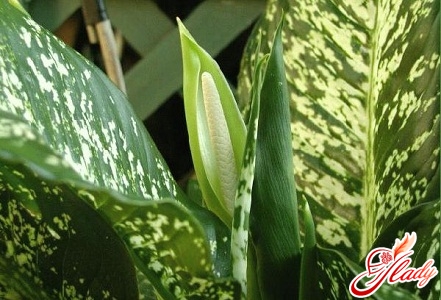
Care for the Diffenbachians
For many gardeners, the question still remains open.question about this mysterious flower. How to properly care for the plant indoors, taking into account the peculiarities of its origin? Let's try to figure it out. First of all, it is necessary to determine the right place for the flower. In winter and spring, the plant is placed in a place well lit by the sun or an artificial light source, and in summer - on the contrary, it is placed in the shade. In principle, dieffenbachia can grow in the shade, but in this case its leaves will lose their unusual variegation. The main thing is that the flower is not exposed to direct sunlight, otherwise its leaves will begin to turn yellow and burn. Dieffenbachia Camilla is kept in a strictly defined temperature regime. In the spring and summer, the plant feels comfortable at 20-22 ° C. Of course, dieffenbachia can tolerate higher temperatures, up to 30 ° C (and even higher!), but only under one important condition - high air humidity. In winter, it is better to provide the plant with cooler conditions with a temperature regime within 15-18 ° C. If the temperature is below 15°C, the plant will lose its lower leaves. Drafts and sudden changes in temperature are harmful to the health and condition of the dieffenbachia. If you decide to ventilate the room, the flower should either be moved to another room or provided with protection from air currents. Caring for the dieffenbachia mix involves abundant watering of the plant during its active growth period. Experts recommend soaking the soil lump in soft water for 15 minutes once a month, after which the water should be allowed to drain. In winter, the flower requires moderate watering. If the dieffenbachia is overwatered, the edges of its leaves will begin to turn brown. The dieffenbachia flower loves humid air, so it is worth spraying the leaves of the plant daily with soft, settled water. If you use lime water to moisten the leaves, they will become covered with white spots. Once a week, you can wash the plant in the shower so that the leaves can be cleaned of dust. If the air temperature exceeds 20°C, it is advisable to place the dieffenbachia in wet peat or on wet gravel. The tropical flower uses up its nutrients very quickly, so during the period of active growth of the dieffenbachia, it should be fed once every 10 days with liquid mineral fertilizer intended for indoor plants. During the dormant period, the amount of fertilizer should be reduced, and during the winter, stop feeding fertilizer altogether. Fast-growing dieffenbachia requires annual replanting. How to properly replant a dieffenbachia? Experts advise transferring the flower from a small pot to a deeper one, without destroying the integrity of the earthen lump. Drainage from broken shards or small pebbles is placed on the bottom of the pot. It is better not to use too large pots for planting, since excess soil leads to acidification of the soil and the death of the flower. Aeration of the roots should be increased regularly - for this, the soil is constantly loosened.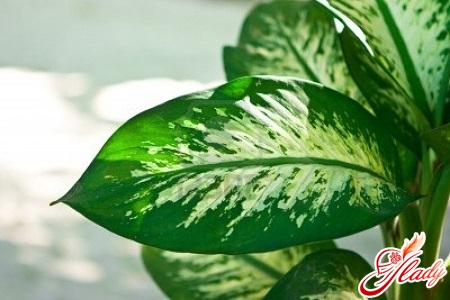
Reproduction of the diffenbachia
Dieffenbachia reproduces in most casesstem apical cuttings, much less often - by air layering. Dieffenbachia is propagated from apical cuttings in spring and summer. Wet sand is the ideal soil for rooting cuttings. For 100% successful results, use a mini-greenhouse. Air layering is used to propagate dieffenbachia from May to September. To do this, take an old plant, the stem of which has become bare at the bottom, and make a cut from the bottom up, 5 mm in size, on the trunk below the leaf. Then take a wet match and dip it in dry hormonal powder intended for cuttings. Insert the match with the powder into the fresh cut so that it cannot close. Wrap the layering site in wet moss, tie it with raffia, and cover with film on top. After a few months, the roots begin to break through the moss. When the new roots get stronger, the petiole is cut off just below the roots and transplanted into a 10-12 cm pot. After separating the air layers, the remaining part of the stem is cut into several equal parts. Each part should have at least one thickened place where a leaf once was (this place is called an eye). It is in the eyes that dormant buds are hidden. Stem cuttings are sprinkled with crushed coal and left to dry for a day. Prepared cuttings are planted in the substrate, maintaining the direction of stem growth. You can lay the cuttings horizontally on the substrate, deepening them by half. After watering, the stem cuttings are covered with a plastic bag or jar. The layers require daily ventilation 2 times a day. Rooting occurs at a temperature of 22-25 ° C. If the air temperature is lower, it is better to use a mini-greenhouse with bottom heating.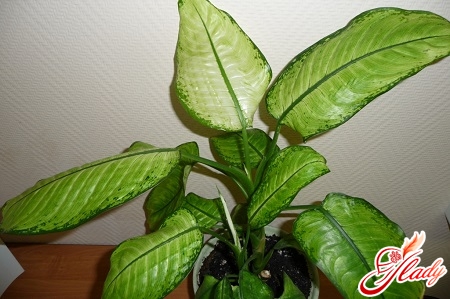
Diseases and pests threatening dienenbachia
Unfavorable lighting or violation of the regimewatering causes the flower to lose its decorative features. Moreover, the plant begins to get sick. If the leaves of the dieffenbachia turn yellow and dry, it means that either the air is too cold for it, or its soil has dried out, or the flower has experienced the effect of a draft. Direct sunlight or strong bright light leads to a change in the color of the leaves and the appearance of spots. In order for the dieffenbachia not to get sick, it must be placed in a moderately lit, warm place where there are no drafts. The poisonous juice of the dieffenbachia, unfortunately, does not save it from damage by various pests - scale insects and spider mites. Occasionally, plants are infected with aphids. If the scale insect infects the dieffenbachia, it is necessary to save it. To do this, a special soap-tobacco solution is diluted, to which a little denatured alcohol or kerosene is occasionally added and the plant is sprayed with it. Since adult pests are not affected by this solution, they are collected with a damp swab, and scale insect larvae are removed with an insecticide. Spider mites are destroyed by washing or spraying the leaves with water and a weak tobacco infusion, green soap, or dusting with ground sulfur, paying special attention to the underside of the leaves. Occasionally, the plant is treated with ready-made insecticides. If an infusion with green soap is used in the treatment, then 2-3 hours after the procedure, the dieffenbachia should be washed under warm water. The favorite place for aphids is the underside of the leaves. Aphids feed on plant juice, thereby causing the affected leaves to dry out and curl. Insects multiply quickly, so it is better to destroy them with ready-made preparations. You can independently prepare an aqueous solution of nicotine sulfate with soap (1 liter of soapy water is taken per 1 g of nicotine sulfate). After treatment with any solution, it is necessary to thoroughly wash the leaves every other day, protecting the soil with polyethylene. If necessary, re-treat the plant against insects. Knowing how to care for dieffenbachia, you will definitely succeed in growing it. Good luck! We recommend reading:




